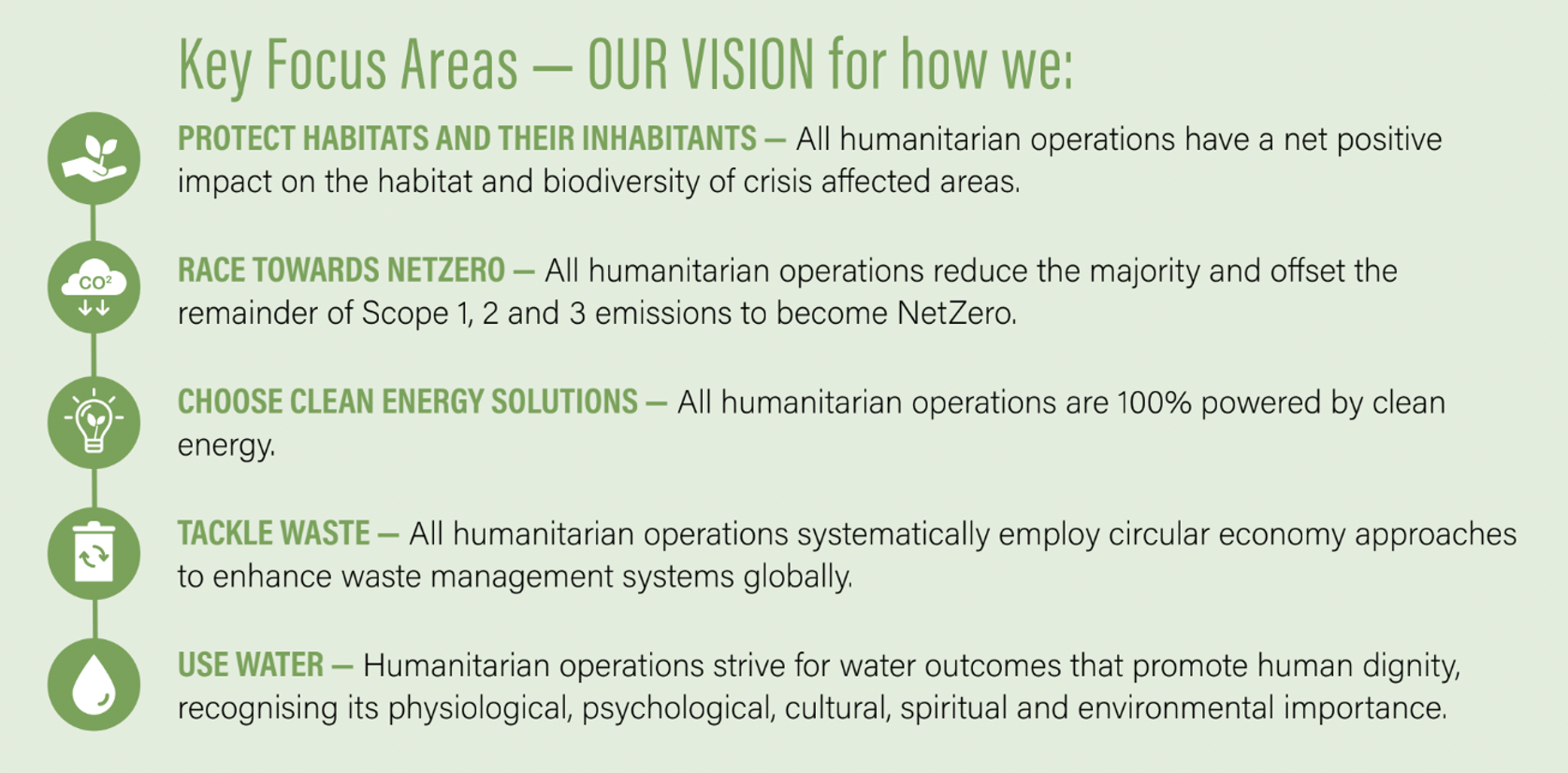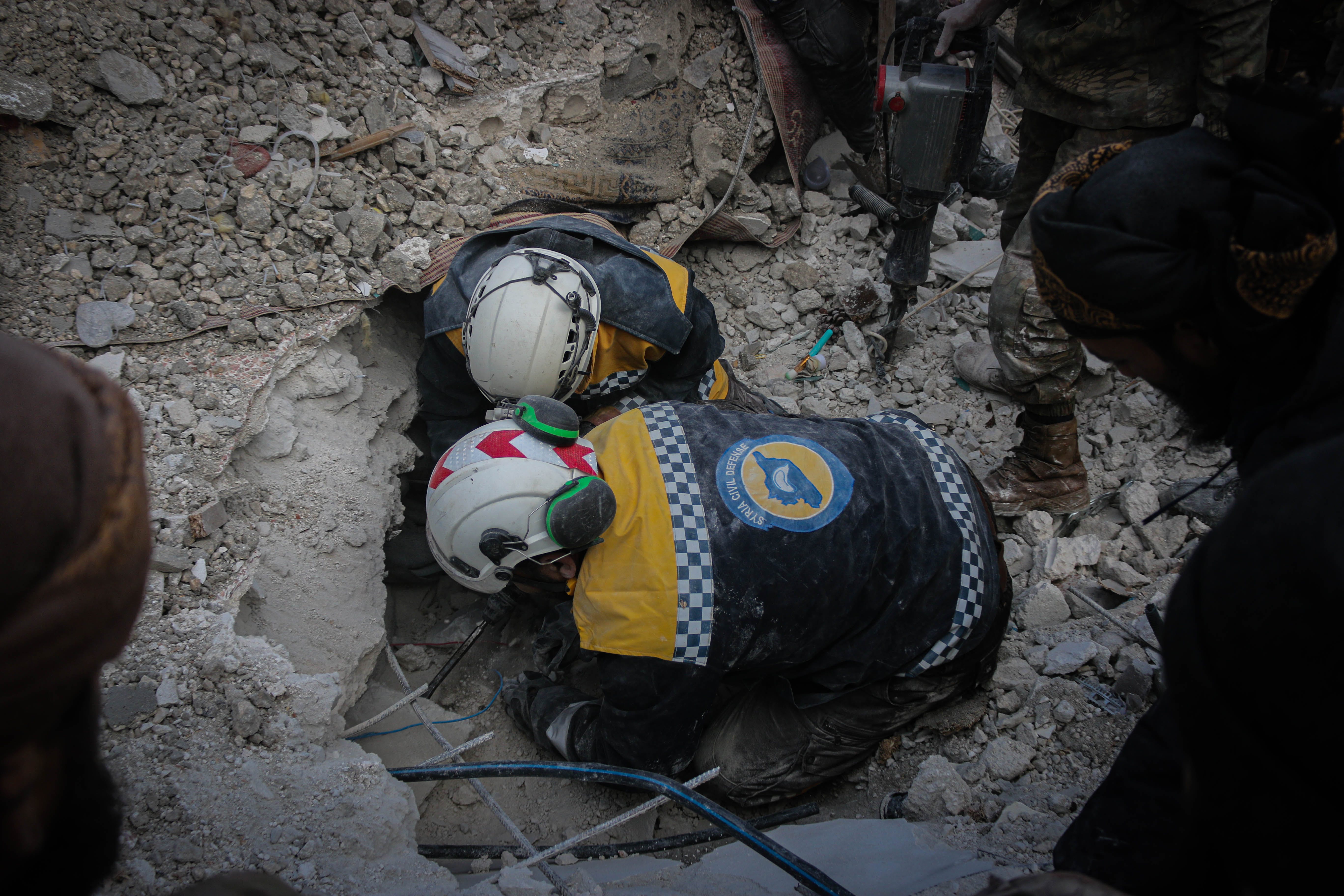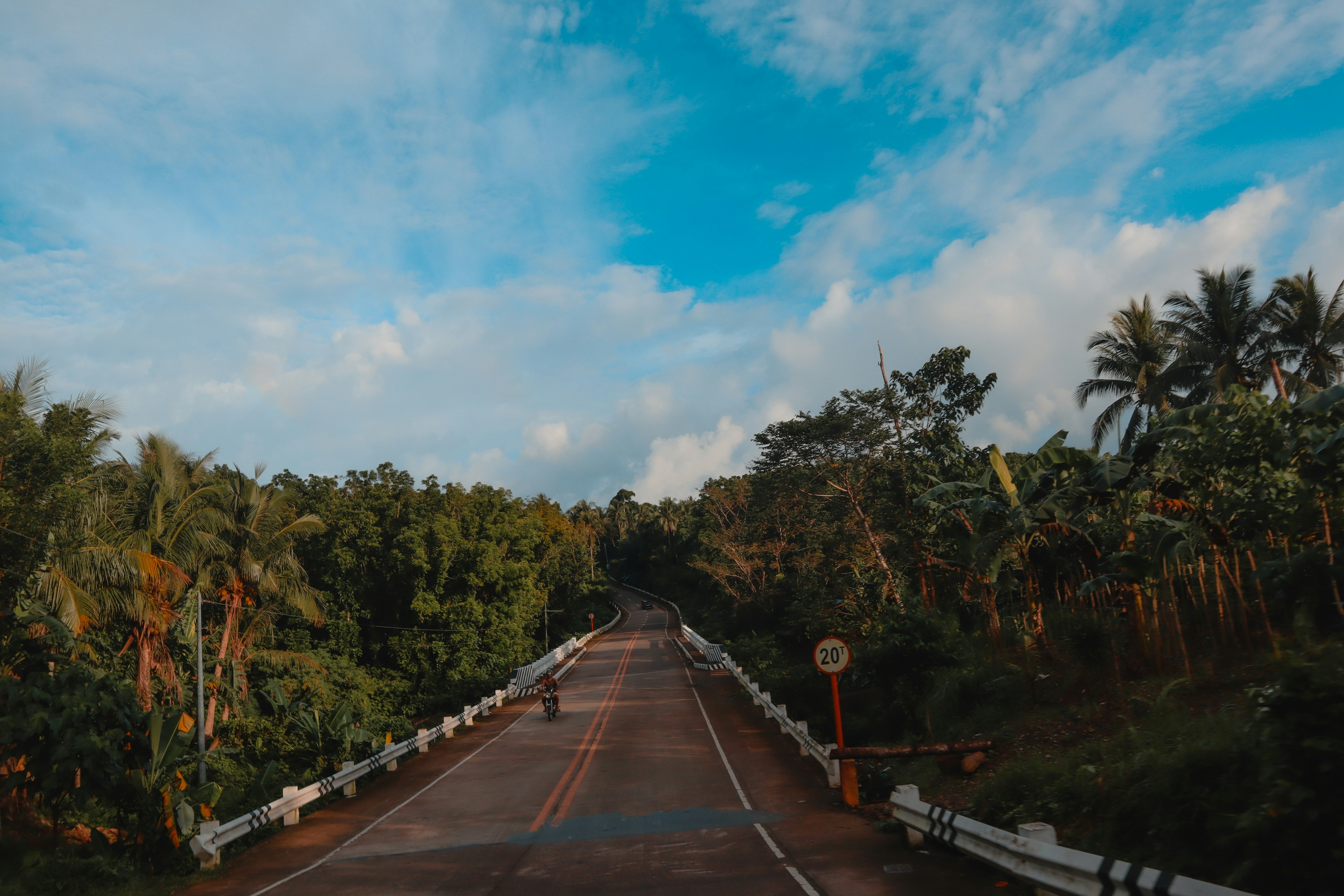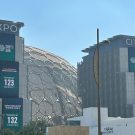With the 28th UNFCCC Conference of the Parties (COP28) wrapping up last week in Dubai, all eyes are on the largest emitters to see what change is truly possible as the world tries to move towards a greener future. This has implications across many major industries and businesses, but what about the humanitarian sector?
Humanitarian organisations have a commitment to upholding the principle of ‘do no harm’ in how they deliver humanitarian assistance. Yet, reducing environmental impact or harm incurred as a result of the provision of aid often continues to be de-prioritised or viewed as a secondary issue. Reliance on high-emitting supply chains and forms of transportation, and single-use packaging materials (among other contributing factors) has resulted in the humanitarian sector accumulating a sizeable carbon and environmental footprint, and causing other detrimental impacts including damage to biodiversity, ecosystems, and livelihoods. Minimising these impacts as part of assistance is critical to ensure humanitarians are not contributing further harm to the populations we seek to assist.
Today we launch the Framework for Greening Humanitarian Action in the Pacific, as part of the Greening the System research of the Humanitarian Horizons Research Program 2021-24. This framework seeks to provide practical guidance, actions, and tools to support humanitarian actors operating in the Pacific to green their operations.
Why now?
Momentum is building across the sector. The increased humanitarian presence at COP28 this year demonstrates that humanitarians are keen to step up action on climate. The catastrophic humanitarian impacts of the climate crisis are clear. We are seeing more and more organisations increase their climate advocacy and incorporate climate adaptation planning in their programming. However, there remains a gap in translating commitments to action and contextualising global goals to local realities.
The Greening the System research was designed to build an evidence base and provide practical guidance to help the sector measurably reduce its negative impact on the climate and environment. The first part of this research, undertaken in 2022, mapped out a vision for a greener humanitarian future. This served to better understand greening priorities and develop an aspirational goal for the sector. The Framework for Greening Humanitarian Action in the Pacific builds on this vision to provide practical actions to operationalise ambitions of the vision in five core priority areas (outlined below).

Why is this important?
This framework takes a different approach to that of existing tools and guidance to address climate and environmental concerns in the humanitarian sector. The research proposes that a new approach is needed to produce practical and accessible tools that are contextualised and adapted to meet the needs of specific contexts, in this case – the Pacific. Without the contextualisation and ownership at local and national levels, global and headquarters-level approaches will likely have limited uptake or impact.
The Pacific has long been at the forefront of climate action, battling increased climate variability, more intense and frequent natural disasters, and life-threatening sea-level rise. As such, the specific needs, knowledge, and priorities of Pacific governments, agencies, communities, and traditional knowledge holders need to be better understood and addressed in efforts to green humanitarian action in the region.
Co-developing the framework to address Pacific priorities
HAG partnered with Lau Dr. Viliamu Iese and Alick Haruhiru to develop the framework through a series of workshops with Pacific Island stakeholders across all levels, to ensure the tool is informed by and relevant to the Pacific context. For more information about the consultation and development process, please see our Behind the Scenes report.
What does the framework do?
This operational framework provides local, national, regional, and international humanitarian practitioners, policymakers, and donors with a practical approach for strengthening greener humanitarian action in the Pacific. The framework can be contextualised and scaled to meet the needs of actors at different levels and different stages of their greening journey. It was designed to avoid the overly technical and therefore inaccessible nature of other frameworks and is the first framework developed specifically for the Pacific region. It centralises community perspectives, priorities, and the roles of national actors in leading humanitarian responses.
The framework aligns with the five key priorities identified in the vision (outlined above), each of which has a desired end goal and sub-priorities to achieve that goal. The five areas are:
- Protecting habitats and their inhabitants through environmentally sustainable humanitarian infrastructure and climate-smart agriculture.
- Managing water use through low-waste and conservative water management.
- Tackling waste through the replacement of single-use materials for reusable and long-life relief items.
- Striving for net zero carbon emissions through reducing emissions in program set-up, transport, and procurement operations.
- Choosing clean energy solutions through greater energy efficiency and a renewable energy systems and solutions.
The framework outlines specific guidance and actions for each priority area that humanitarian organisations can take to move forward toward the end goal. Each of these steps is linked to a phase in the disaster management cycle, making it easier for organisations to time when each action may be best implemented. The framework is also accompanied by screening and baselining tools to support implementation and monitoring.
What’s next?
The next phase of our research aims to test, refine, and validate the framework and tools to ensure they meet the identified needs of Pacific stakeholders. We are seeking partners in the Pacific who are interested in operationalising the framework, to work with us to further adapt and refine the framework to meet their unique needs and put our research to the test.
If you or your organisation are interested in engaging in the testing of the framework, please contact the research team:
- Jesse McCommon: jmccommon@humanitarianadvisorygroup.org
- Sam Quinn: squinn@humanitarianadvisorygroup.org
- Jess Lees: jlees@humanitarianadvisorygroup.org






